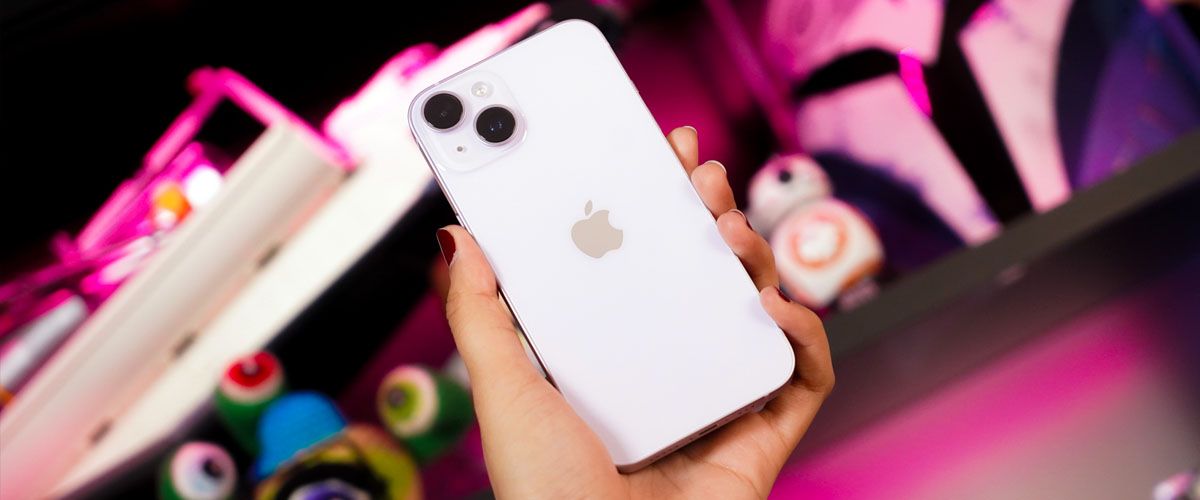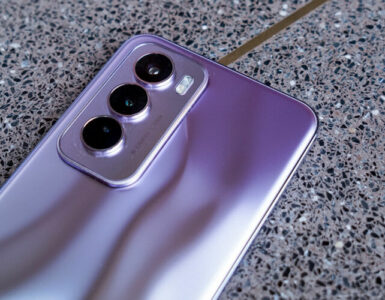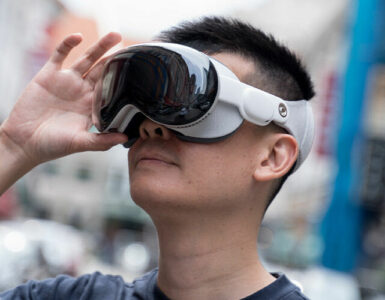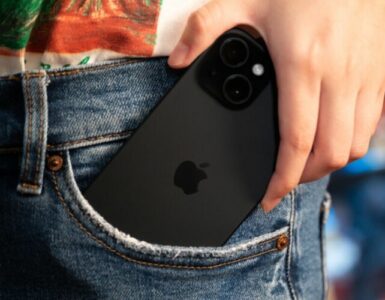An annual release of new products is the standard these days, from fashion, toys, books, games, and electronics – but no one can hold court as well as Apple. With its new lines of releases each year, from tablets, and laptops to desktops, its iconic smartphone still takes centre stage. And understandably so, since everyone uses their phones all the time, perhaps even more so than any other device available, but the biggest question has been, what’s new and is it worth upgrading at all?
Luckily, Apple lives by the mantra that, “If it ain’t broken, don’t fix it”, because the iPhone 14 follows the overall design and presence of its predecessor, the iPhone 13. The difference now is that without a smaller, mini model, the base iPhone 14 model is now the entry-level device that looks and feels like its larger brethren. This year’s make still features the same sleek flat edges and beautifully rounded corners, with the only exception that the iPhone 14 is slightly thicker by 0.25mm, so if you think your new phone will fit into old covers – it won’t, also because of the different camera placement in the rear.
The iPhone 14 comes in five colours: Purple, Blue, Starlight, Midnight and Product (Red) and measures 146.7 x 71.5 x 7.8 mm. Even though it is the smallest of the new lineup, it still offers a generous 6.1-inch all-screen OLED display sufficient for casual Netflix viewing or mobile gaming.
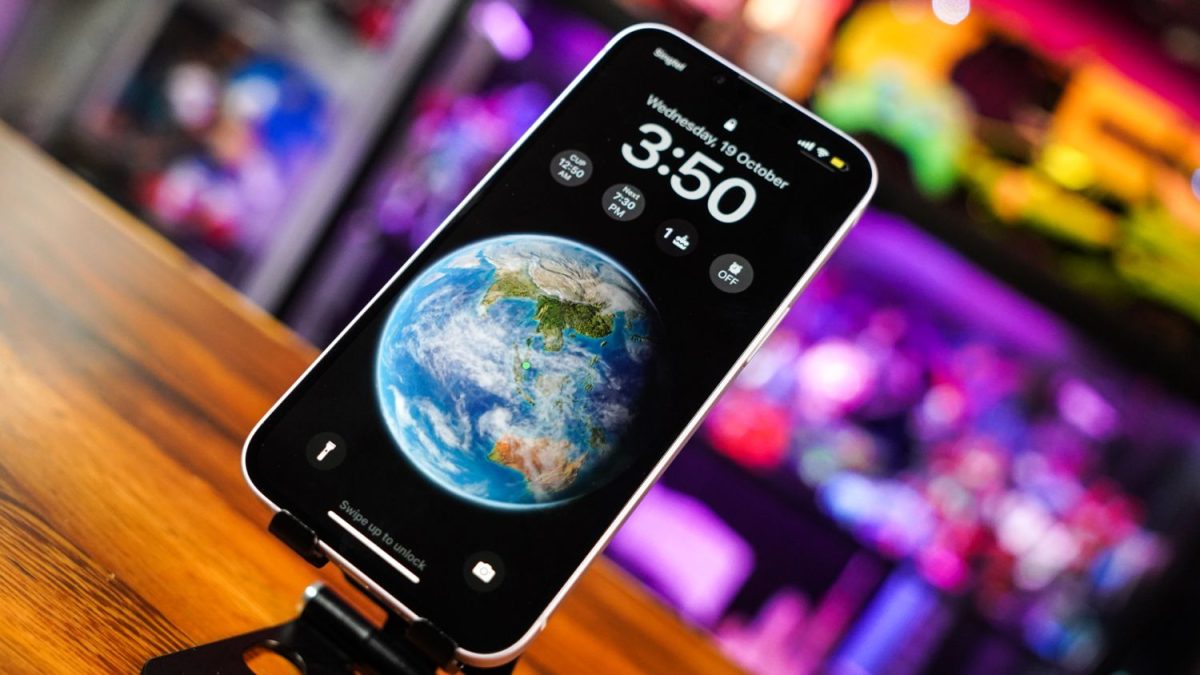
The iPhone 14, like its predecessor, also features two cameras on the back, a 12MP main, and a 12MP ultra-wide, in a similar diagonal arrangement. Unfortunately, it also does not have a dedicated telephoto lens as seen in the Pro models. But that’s where the last similarity lies. The iPhone 14 and iPhone 13 may look the same, but the iPhone 14 is packed with plenty of upgrades that bump it up in performance when compared to the previous model.
The iPhone 14 packs a bigger sensor size (though Apple hasn’t revealed the size) with the same 12MP resolution as before, but enhanced with a faster f/1.5 aperture. The 12MP front-facing camera now comes with auto-focus and optical image stabilisation, so selfies and wefies are much clearer than before, as the camera is able to capture more detail and facial features better.
Thanks to the iPhone 14’s new Photonic Engine image processor, photos taken with the rear camera are significantly clearer and more vibrant too. We’ve also noticed that Apple has moved the white balance slider towards the cooler side of the spectrum, so photos are not bathed in a yellow overcast as observed on the preceding models that came before it. The colours are still warm and pleasant to look at, but it’s not yellowish. There’s also a slight increase in contrast so objects tend to pop a lot more in the photo, further emphasising the finer details too.

Another big pro to the larger sensor and an improved f/1.5 lens aperture is that there is a significant difference seen when taking low-light shots, and images of moving subjects. It is not only easier to do so with the help of these upgrades, but it is also captured with better clarity.
To put it simply, Apple has improved the quality of photos taken from the iPhone 14, such that even the untrained eye can spot the improvements in quality when taking photos on the iPhone 14. Sure, the changes may not blow things out of the water for photographers or those with a passion for mobile photography (for that we’d refer you to the iPhone 14 Pro Max), but it is perfect enough for average users who enjoy documenting bits of their life like a family birthday celebration, a night out with friends or when on a solo hike on a Sunday morning.
On the video front, the iPhone 14 supports up to 4K video at 60fps, with now standard features including night mode time-lapse, true tone flash, and 2x optical zoom up to 3x, just to name a few too. The main differences are that the iPhone 14 has two added features: Cinematic Mode up to 4K HDR at 30 fps (the 13 only has cinematic mode up to 1080 at 30 fps) and Action Mode up to 2.8K at 60fps. The differences in videos are small and not very noticeable until you’re trying to take videos at a concert or of race cars speeding through and you realise your video wouldn’t look this good had it not been recorded on the iPhone 14.


Every year, Apple tries to add value to their new phones by providing a faster, newer chipset. Unfortunately, this can’t be said for this year’s lineup. The iPhone 14 comes with last year’s A15 bionic chipset, and to improve the performance of the standard iPhone model over last year’s, Apple has given the iPhone 14 a 6-core CPU and 5-core GPU. The iPhone 14 also comes with 6GB of memory, a slight bump from last year’s 4GB memory too.
Performance-wise, the A15 chip is still a leading processor, as the combination of the chip and slightly increased CPU and GPU means the iPhone 14 can open multiple apps and have as many services run in the background without crashing, allowing for a smooth and satisfactory experience even when gaming. We experienced no lag when switching between apps or swiping past the multiple pages on our home screen and the battery life is rather solid.
An entire day of light usage such as social media scrolling during commutes, listening to music on Spotify, texting colleagues, friends and family members throughout the day via various communication platforms like WhatsApp and Telegram, as well as catching an episode of a TV show during lunch break, will still leave you with at least 40% of battery life by the end of the day. Even if you accidentally fall asleep and forget to charge your iPhone, you’ll still be able to use your phone the next morning. By that, we mean you’ll still be able to sneak in an hour or two of music listening on your commute on the way to work. Of course, you’ll have to charge it the moment you reach your desk.
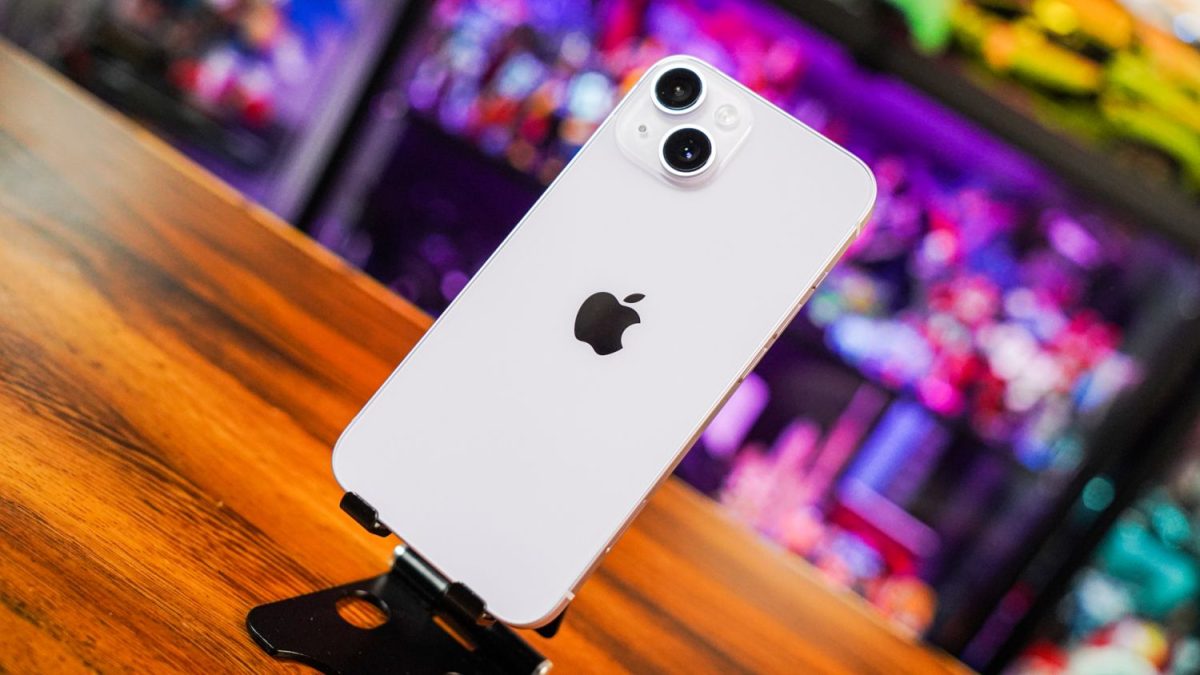
Most impressively, we took the iPhone 14 to a concert with 45% battery life and took plenty of photos and videos (mobile data switched off) during the event, booked a cab after the concert and managed to reach home with just 2% left on the phone. Going to a concert without a portable charger is every fan’s worst nightmare, but the iPhone 14 makes it possible – though we wouldn’t push our luck too much the next time.
Perhaps, the biggest feature that local users will have, but never get to use in this market is the new Emergency SOS via satellite. This allows the device to communicate with orbiting satellites, and send messages to emergency services when you’re out of cellular range. Living in big cities, we might not think this to be useful but for the runners, hikers and campers in the wide open spaces of North America, it’s absolutely life-changing. The phone will connect with satellites overhead and put you in touch with emergency services and let them know of your location.
This feature rolls out in November in the US and Canada and is available for free for two years. All iPhone 14 models come with it and while we cannot use it outside of North America for now, our phones can connect to the satellites if we ever visit North America, and enter areas without cellular network coverage. So if you’re going for a holiday or hiking anywhere in the States or Canada, you know you’re covered if you find yourself in an emergency and requiring quick assistance.
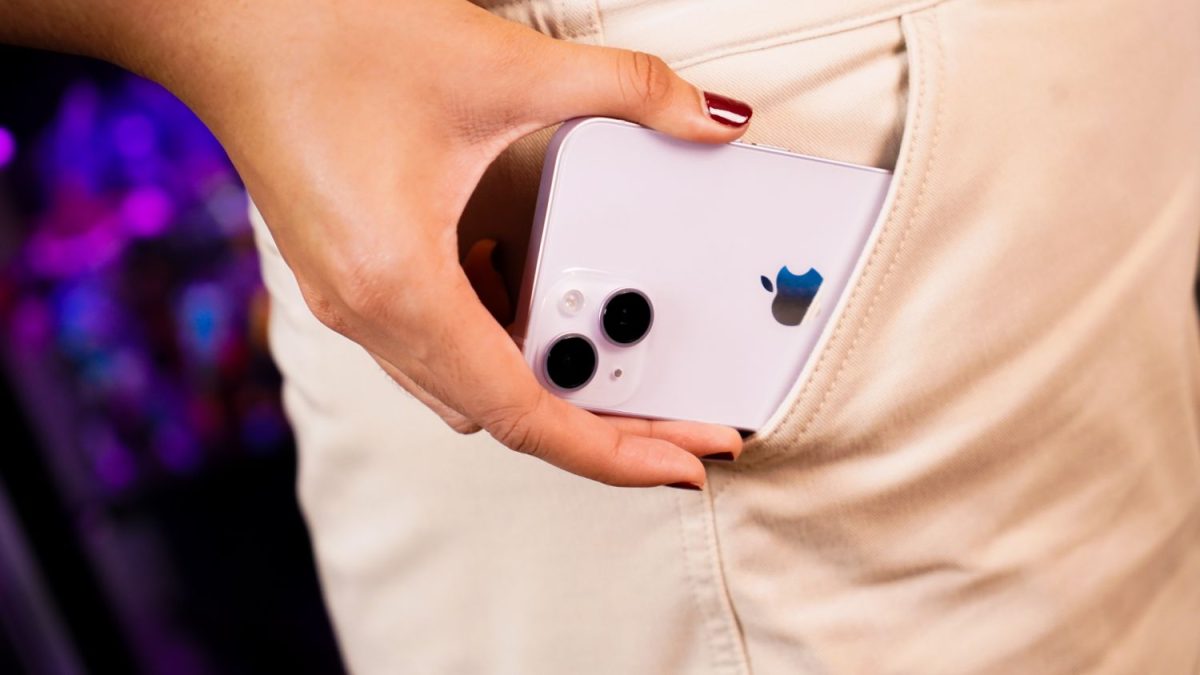
Starting from S$1,299 for 128GB of storage, the iPhone 14 is not going to break the bank and is the most affordable out of the entire iPhone 14 lineup – though it means you won’t have the additional features of a dynamic island like on the iPhone 14 Pro Max for example – but the sentiment still stands. If you’re looking for a standard phone for everyday usage or are switching operating systems, the iPhone 14 is a great entry point that will impress you with its photo-taking capabilities and fast, smooth performance. Apple’s iPhones never lack in beauty anyways, so you get to flex a sexy phone each time you take it out of your bag or pocket.
That said, we think an iPhone 14 upgrade makes the most sense for users who are using older phone models like the iPhone X or even the iPhone 11. This is because users will definitely find a big difference in the performance and efficiency of the phone if they were to make that huge jump.
However, seeing how the standard iPhone 13 and iPhone 14 are more or less similar – even after acknowledging the slight improvements in camera and its battery life – users may not necessarily feel a huge difference or impact in the upgrade. We recommend that users that are currently holding the iPhone 13 either wait for Apple’s next release because by the time the iPhone 15 comes around there may be even bigger changes to the phone’s hardware and features, or take a leap and explore the Pro and Pro Max models where the additional features and bigger display will better impress you.
GEEK REVIEW SCORE
Summary
The iPhone 14 is a reliable phone that promises you great battery life, smooth performance and even greater photos for the everyday user. If you’re looking to finally make a switch to an iPhone or upgrade from a ridiculously old model, then the iPhone 14 is a great starting point to welcome you into what Apple has to offer in this technologically advanced world.
Overall
8.8/10-
Aesthetics - 9/10
9/10
-
Build Quality - 9/10
9/10
-
Performance - 9/10
9/10
-
Value - 8/10
8/10
-
Geek Satisfaction - 9/10
9/10

